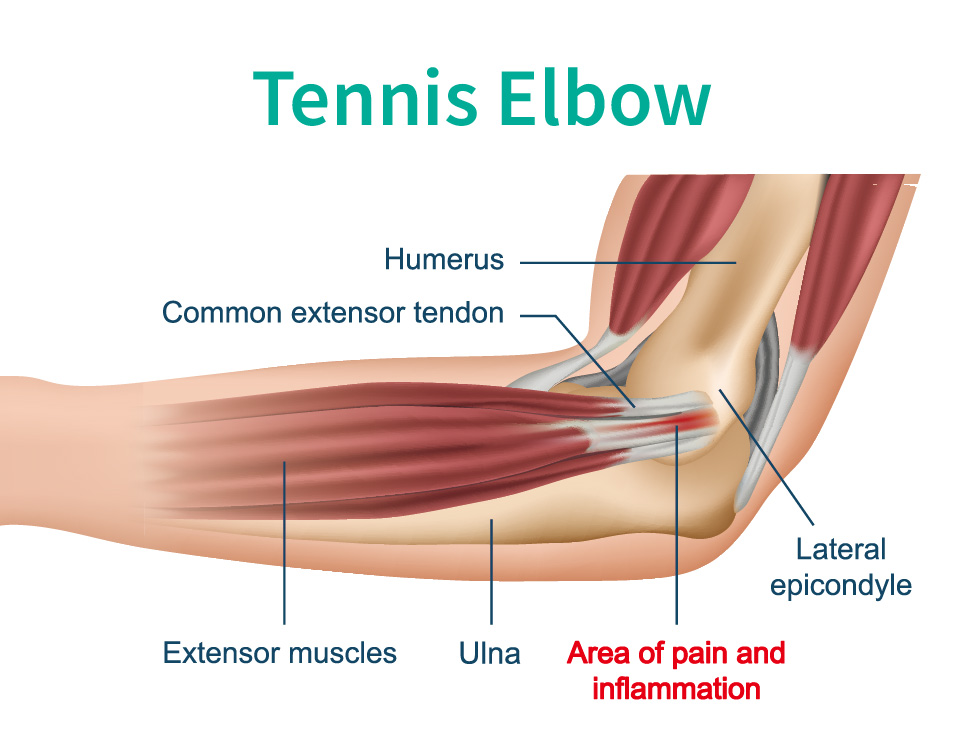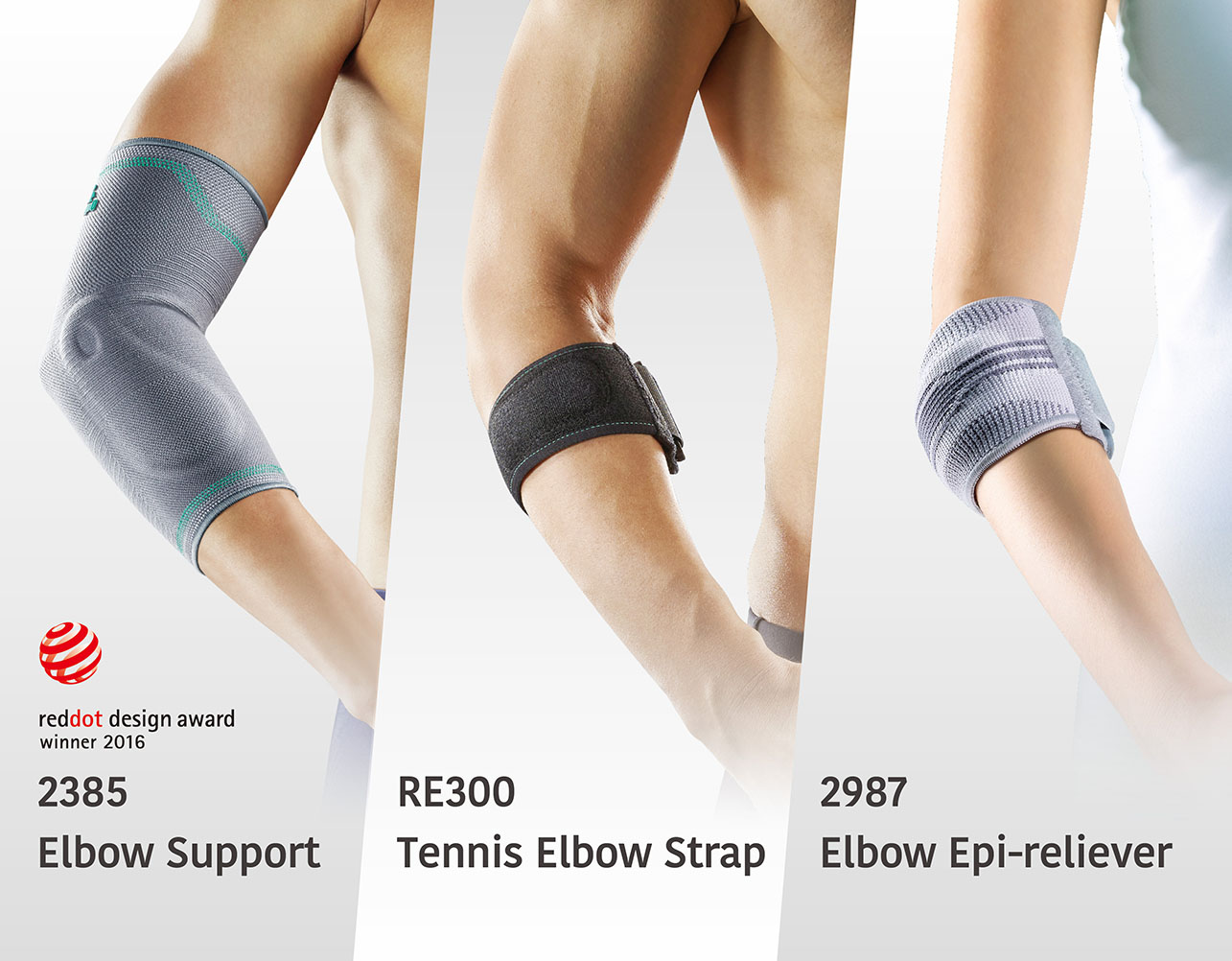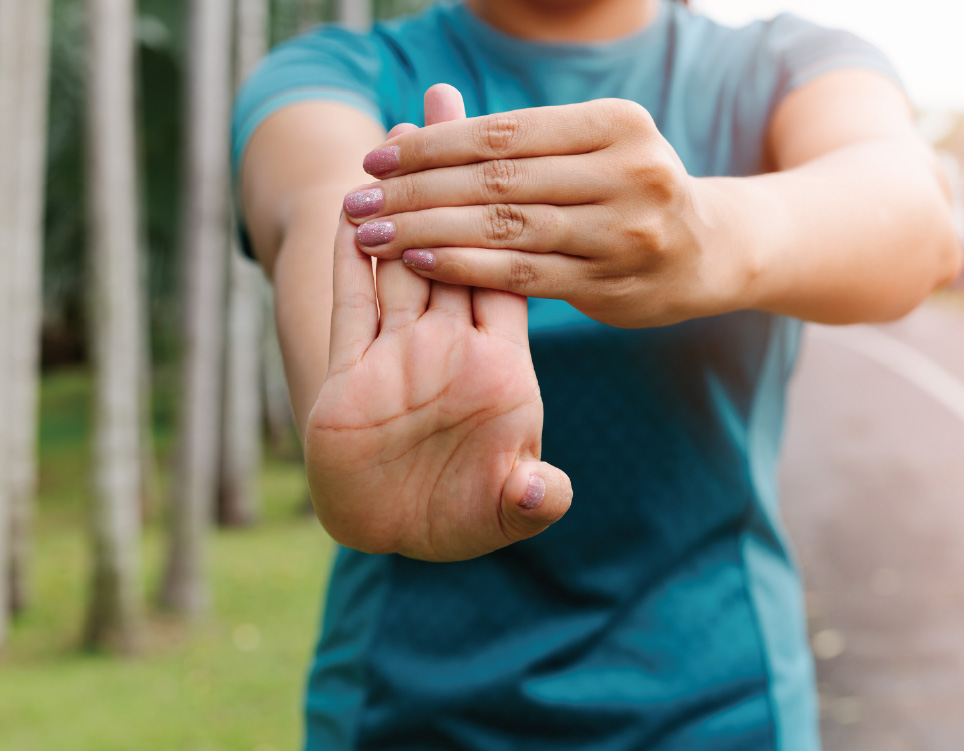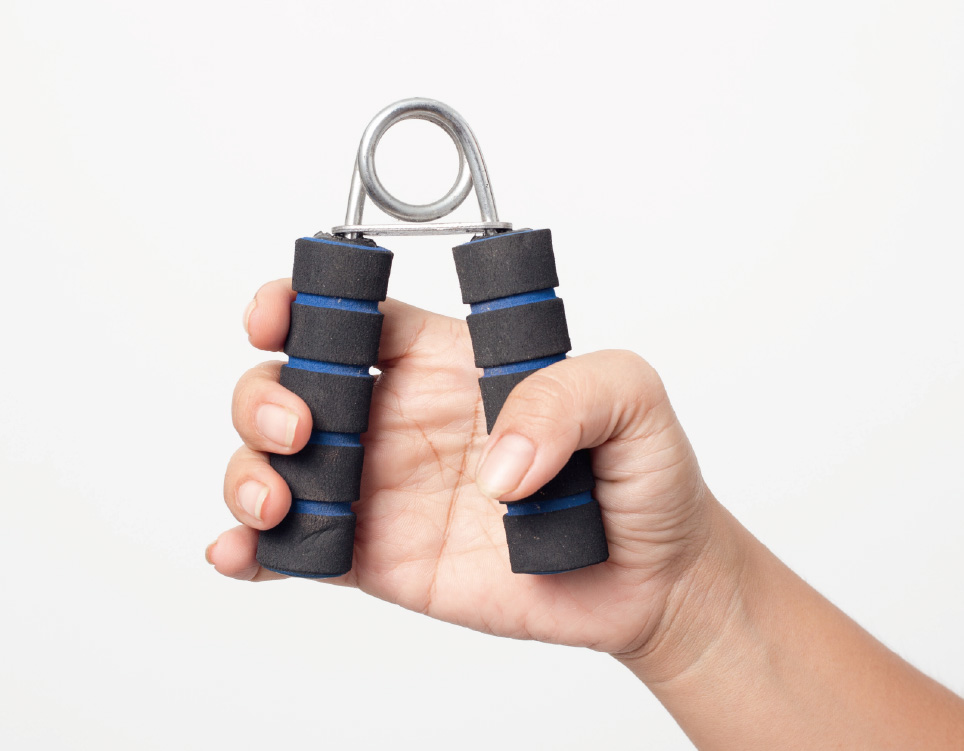LOADING
Tennis elbow is a common overuse injury that causes pain around the outer elbow. It affects not only athletes but also people who perform repetitive arm or wrist movements. This article explores its causes, treatment options, and ways to support recovery through bracing and exercise.

Tennis elbow, medically known as lateral epicondylitis, is a common overuse injury involving inflammation or microtearing of the tendons that attach to the lateral epicondyle of the humerus—the bony prominence on the outside of the elbow. It is primarily caused by repetitive wrist extension or forearm rotation, leading to strain on the extensor carpi radialis brevis (ECRB) tendon. Despite the name, tennis elbow is not limited to athletes; it frequently affects individuals in occupations or activities involving repetitive arm movements, such as typing, plumbing, or using hand tools. The condition is most prevalent among adults aged 30 to 50 and has an estimated incidence of 1 to 3% in the general population.
Symptom of Tennis Elbow Symptoms of tennis elbow typically develop gradually and may include:
Tennis elbow results from repetitive strain or overuse of the forearm extensor muscles, particularly the extensor carpi radialis brevis (ECRB) tendon, which attaches to the outer part of the elbow. Repeated stress can cause microtears and degeneration of the tendon over time. Common causes include:
Treatment for tennis elbow aims to reduce pain, restore function, and prevent recurrence. Key management strategies include:

Braces for tennis elbow, also known as counterforce braces or forearm straps, are designed to offload stress from the injured tendon, particularly the extensor carpi radialis brevis (ECRB), and support functional recovery. These braces are typically worn just below the elbow and are most effective when combined with activity modification and rehabilitation. Their benefits include:
✓ Load Reduction: Counterforce braces apply targeted pressure to the proximal forearm muscles, reducing the force transmitted to the lateral epicondyle during wrist extension and gripping. This biomechanical offloading helps limit further aggravation of the tendon and protects it during daily use.
✓ Pain Relief: By reducing the mechanical load on the inflamed or degenerated tendon, braces can help decrease pain during functional tasks such as lifting, grasping, or typing. This makes it easier for individuals to remain active while minimizing discomfort.
✓ Support during Movement: Braces stabilize the forearm musculature and dampen vibration or sudden tension generated by repeated or forceful movements. This support reduces the chance of repeated microtrauma during work or sport-related activities.
✓ Improved Healing Environment: By minimizing tensile stress at the tendon’s origin, braces help maintain a more favorable healing environment. This allows for more effective tissue repair and reduces the risk of further tearing or chronic degeneration.
✓ Prevention of Recurrence: During the rehabilitation phase or when gradually returning to occupational or athletic activities, braces offer protective support. They help manage load during high-risk tasks and are particularly useful for patients with ongoing symptoms or a history of recurrent episodes.
*ELBOW SUPPORT | Products | OPPO Medical
*TENNIS ELBOW STRAP | Products | OPPO Medical
*ELBOW EPI-RELIEVER | Products | OPPO Medical
Rehabilitation exercises are critical to restore strength and prevent recurrence. Common exercises include:

Extend the affected arm in front, palm down, and gently pull the hand downward with the opposite hand to stretch the forearm muscles. Hold for 15–30 seconds.

With the arm extended and the palm facing up or down, use the opposite hand to help maintain the position, stretching the forearm flexors.

Squeeze a soft ball or hand gripper to build grip strength gradually.
Hold a light weight (e.g., dumbbell) and slowly lower the wrist from an extended to a neutral position, then use the other hand to return it. Perform 10–15 reps.
Use a light weight or resistance band to rotate the forearm back and forth while keeping the elbow at 90 degrees.
Copy Link